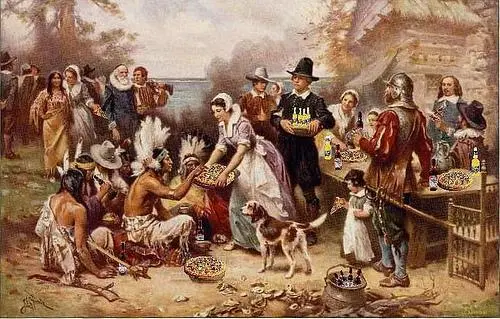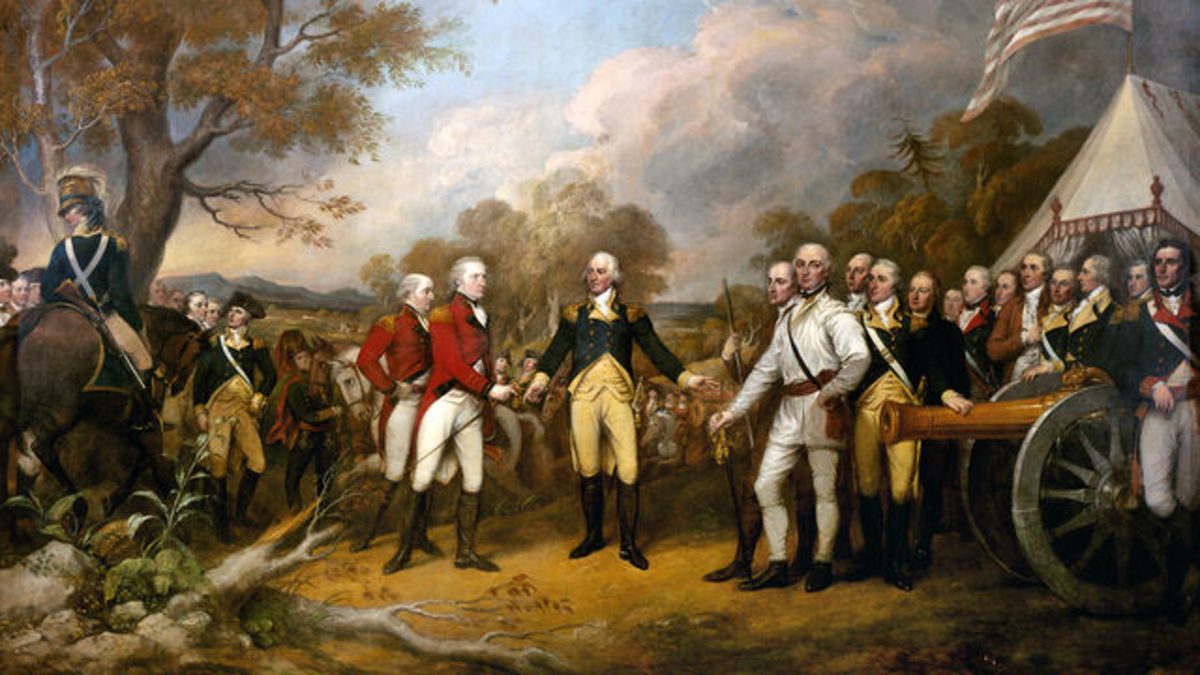The literary heritage of the United States begins with the many indigenous communities of the Americas, whose stories, chants, and prayers came down from generation to generation through oral performances, which changed with each teller. For many years, these stories remained within individual tribal communities, though some Native American oral texts were eventually transcribed. Many Native American creation stories share common features, such as the importance of the natural world, yet each story offers unique insights into the history and beliefs of its people. Several creation stories, including those of the Creek, the Iroquois, the Cherokee, and the Lakota, depict a cataclysmic flood, after which the current world, populated with people and animals, comes forth. Numerous stories, including those of the Navajo and Lakota, discuss the role of a trickster figure who participates in the world’s creation. North American creation stories unite the world of humanity with the natural world through such symbolically important animals as the wolf, turtle, and serpent.
Europeans traveling throughout the continent in voyages of discovery and acquisition produced the first major set of written texts coming from the Americas. The voyages of Christopher Columbus in 1492 inaugurated numerous exploratory trips authorized by Spain, Italy, England, and other European countries. Within fifty years after Columbus, Europeans had settled communities from the eastern coast of what is now Canada, along the eastern seaboard, and on throughout South America. Other explorers moved west through the interior of the continent. Throughout this period, explorers documented their experiences through a combination of travel journals and formal missives back to the governments sponsoring their travels. This literature of encounter records detailed information regarding the physical landscape, flora and fauna, and most importantly, the indigenous peoples of the Americas. Columbus’s letters to King Ferdinand and Queen Isabella explain his early reactions to the New World, specifically to Hispaniola (comprised today of the Dominican Republic and Haiti). He describes the lush countryside ready for cultivation, as well as his plans to control the indigenous people if necessary. In his journal entry for October 15, 1492, Columbus notes that the Arawak Indians lack experience with fighting: “Your Highness will see from the seven whom I caused to be taken in order to carry them off that they may learn our language and return. However, when Your Highness so commands, they can all be carried off to Castile or held captive in the island itself, since with fifty men they would be all kept in subjection and forced to do whatever may be wished” (28). Columbus’s journals convey his interest in the place and its people, but also his indifference to the Indians’ welfare.
Other early explorers expressed a mix of emotions toward the New World. Bartolomé de las Casas, a Spaniard who traveled to America in 1502, criticized the ways the explorers treated indigenous peoples. For years Casas assisted in the settling of Hispaniola, work that included physical attacks on the Taino Indian community, supposedly undertaken as a defensive measure, although just as likely executed without provocation. Like other settlers, Casas conscripted slaves from among the indigenous people, taking their land and their liberty. After his ordination as a Roman Catholic priest in 1510, Casas realized that such violent measures for controlling the indigenous population were detrimental to the Indians and to his people. He released his slaves, and he also advocated for the rights of Native Americans, taking his argument to King Ferdinand. Although he initially failed to alter prevailing practices, he was appointed Protector of the Indians. In 1516 Casas presented to the King’s regents his “Memorial de Remedios para Las Indias,” which proposes methods for improving conditions in the West Indies, including ceasing the use of forced Indian labor and changing the economic system. Casas’s “Brevísima Relacíon de la Destruccíon de las Indias” (1542), a tract detailing the violent treatment of the indigenous people, initiated changes in Spain’s slavery laws. He also wrote Historia de las Indias, a three-volume work chronicling the history of the colonization of the West Indies, from 1492 through 1520.
La Relacíon de Alvar Núñez Cabeza de Vaca, originally published in Spain in 1542, recounts the adventures of Cabeza de Vaca throughout the American South and Southwest. Cabeza de Vaca traveled in 1527 as part of a large exploration to Hispaniola and then on to the Florida coast, surviving shipwrecks and other catastrophes. His La Relacíon describes the years he roamed the region, including his imprisonment by the Karankawa, his work as a healer and merchant, and his life among indigenous groups, including the Pimas, Coahuiltecans, and Conchos. His descriptions of these tribes’ daily lives illuminate their customs and beliefs, including aspects of marriage, death rites, personal relationships, clothing, commerce, child-rearing, and other subjects. Although he struggled throughout his time in America, Cabeza de Vaca respected the indigenous people for their kindness to him.
Throughout the sixteenth and into the early seventeenth century, other explorers and settlers recorded their encounters with America. Such reports came from other Spaniards, such as Francisco Vásquez de Coronado, who traveled throughout the American Southwest, and Hernán Cortés, who traveled throughout Mexico, ultimately conquering the Aztec empire. Englishmen Arthur Barlowe described his voyage to Roanoke and John Smith wrote of his experiences in Jamestown, as well as other parts of the eastern coast. Frenchmen like Samuel de Champlain played an integral role in France’s claims to land in what is now Canada and the northeast United States, and Robert de La Salle traveled the length of the Mississippi River and claimed the Mississippi River basin for France, naming it Louisiana.
By the seventeenth century, much of North America’s eastern coast was being settled, with new immigrants creating communities or joining existing ones. These settlements fostered new publications, with some of the writing intended for people living in the colonies rather than for those living in Europe. Most of these nonfiction publications focused on issues important for people in these new towns and cities, including histories and religious tracts. One of the earliest and most important works from this period was William Bradford’s Of Plymouth Plantation. A Puritan Separatist, Bradford came to North America on the Mayflower and settled in Plymouth, Massachusetts. His history of the region depicts the community’s experiences from 1621 through the 1640s, and he also explains the religious reasons for the Puritans’ exodus to North America.
John Winthrop, one of the founders and the first governor of the Massachusetts Bay Company, brought his Puritan beliefs to the colonies in 1630. On his voyage to America, he gave a speech, later published as A Model of Christian Charity, outlining his ideas about building a community based on religious responsibility. Like other Puritans, he believed that God creates roles for each human and that all people play a role in the community, whether as leader or follower, or as rich man or poor. Society, Winthrop argued, requires the cooperation of its members working together. Winthrop also kept a journal detailing his experiences in America, which was published as The History of New England from 1630–1649. After several generations of Puritans established colonies in North America, Cotton Mather, a Puritan minister in Boston, scripted his comprehensive work on the history of religion in New England. Magnalia Christi Americana (1702) tells of the hard work and dedication demonstrated by generations of New England settlers who established communities steeped in a Puritan sensibility.
An original member of the Massachusetts Bay Company like Winthrop, Anne Bradstreet wrote poetry as a child in England and continued in America. In addition to lyric poems such as “A Letter to Her Husband, Absent upon Public Employment,” “The Author to Her Book,” and poems in memory of her father, grandchildren, and others, Bradstreet also wrote a series of “Meditations.” A collection of her work was first published in England in 1650, making Bradstreet the first published poet of the New World. Following Bradstreet’s lead, Michael Wigglesworth, a Puritan minister, became the best-known poet of the age. “The Day of Doom” (1662) inspired a fervent readership, particularly among Puritan readers, due in part to the poem’s graphic descriptions of the day when God returns to judge the wicked:
Mean men lament, great men do rent
their robes and tear their hair:
They do not spare their flesh to tear
through horrible despair.
All kindreds wail, their hearts do fail:
horrour the world doth fill
With weeping eyes, and loud out-cries,
yet knows not how to kill.
(stanza 11)
Such powerful religious language highlights the centrality of religious themes to the literatures of the British colonies. Not surprisingly, many colonists who fled England to escape religious persecution appreciated religious verse.
Although much of the writing from seventeenth-century America focuses on the establishment of colonies and religion in the New World, other publications accentuate the dangers of life in an apparently uncivilized land. On February 10, 1676, Mary Rowlandson, a minister’s wife, was kidnapped along with her three children by members of the Wampanoag. A prisoner for eleven weeks and then ransomed for twenty pounds, Rowlandson records her experiences in A Narrative of the Captivity and Restoration of Mrs. Mary Rowlandson (1682). The narrative excited readers, and her religious devotion served as an example for others in duress. Rowlandson’s captivity narrative is the most famous of this genre. Some stories of captivity recount not only captivity’s dangers but also its positive features. In 1755, young Mary Jemison and her family were kidnapped by a group of Shawnee and Frenchmen during the French and Indian War. After many of her family died, Seneca Indians adopted her. Eventually she married a Delaware and, after he died, a Seneca. When Jemison had the opportunity to return to the colonies, she instead stayed and lived out her days among the Seneca. Her experiences were published in 1824 as Narrative of the Life of Mrs. Mary Jemison. The publication of these captivity narratives and of other stories of adventure, such as that of Cabeza de Vaca, started a long series of American adventure literature.


